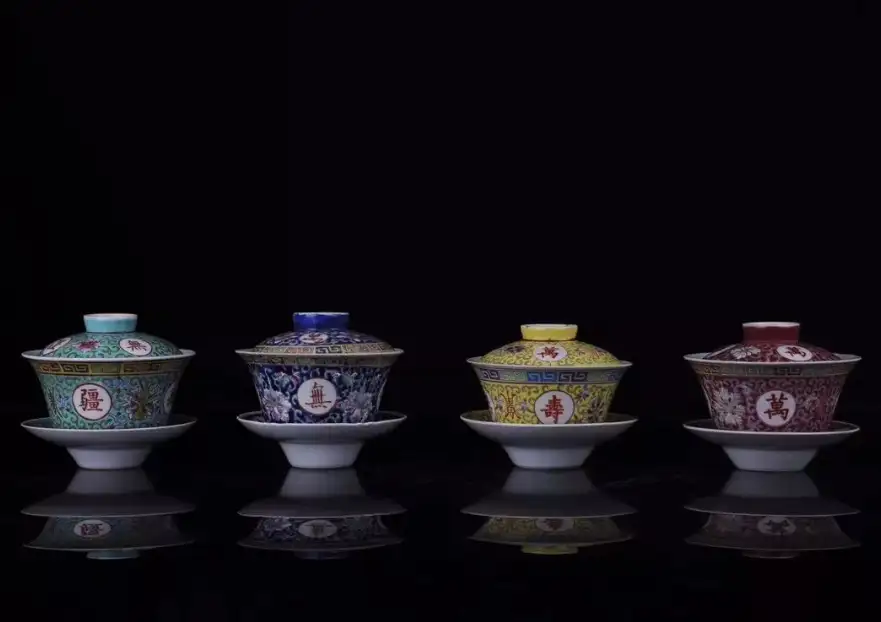
Zhen Yi Tang: “We Are Just Custodians of an Era”
- 22 Apr, 2025
- Posted by Admin
- 0 Comment(s)
Zhen Yi Tang: Focusing on Factory Porcelain for Twenty Years, “We Are Just Custodians of an Era”
Upon entering Jingdezhen, the smokeless chimneys and abandoned porcelain factories silently narrate a bygone era of collective effort in the state-owned porcelain industry. Collaborations among modern ceramic masters, extremely detailed process management, and the revival and innovation of ancient techniques created a peak in ceramic art. This era produced later masters, artisans, and artists…
With the tides of history, today’s Jingdezhen is filled with countless independent studios and art spaces.
That unforgettable era of brilliance, those artistic masterpieces created by the entire city’s efforts, are surprisingly well-preserved in a place called “Zhen Yi Tang.”
“We are custodians of an era,” said Jiang Jingchen, the founder of Zhen Yi Tang. She believes that factory porcelain will be rediscovered by more people in the future.
Jiang Jingchen describes herself as someone who doesn’t cling to home.
This seems entirely plausible. She has kept her hair short for nearly a decade, wears simple clothes, and goes makeup-free. She’s been accustomed to living away from home since childhood and even ran a clothing business.
Her past experiences have deeply influenced her values. Even now, as she focuses on promoting factory porcelain in Jingdezhen, she adheres to certain principles: respect for every penny earned through hard work, emphasis on contracts, and helping friends whenever possible.
01 An Accidental Act That Preserved a Treasure Trove of “Factory Porcelain”
Factory porcelain entered Jiang Jingchen and her father’s lives by chance.
Before returning to Jingdezhen, 21-year-old Jiang Jingchen was in the clothing business. Operating three stores in a prime urban location was proof enough of her independence and pride.

From her father, she learned about this unexpected chapter of their lives.
The 1990s were a time of upheaval for Jingdezhen. After the founding of New China, the ceramic industry underwent mergers and reorganizations, leading to the establishment of the “Ten Great Porcelain Factories,” which leveraged state-owned enterprise advantages to innovate techniques and technologies. As state-owned factories gradually shut down or restructured, a vast quantity of fine porcelain was left behind—this is what people now call “old factory porcelain.”
Out of a love for these treasures and a sense of Jingdezhen nostalgia, the Jiang family took in this batch of factory porcelain.
“In the 1990s, we collected over ten million yuan worth of porcelain,” Jiang Jingchen recalled.
At the time, factory porcelain wasn’t yet popular. Countless vases, porcelain paintings, sculptures, and tea ware lay quietly on the concrete floors of dimly lit warehouses. As the planned economy transitioned to a market economy, the Ten Great Factories declined, the porcelain industry collapsed, workers were laid off, and Jingdezhen entered an era of competitive workshops.
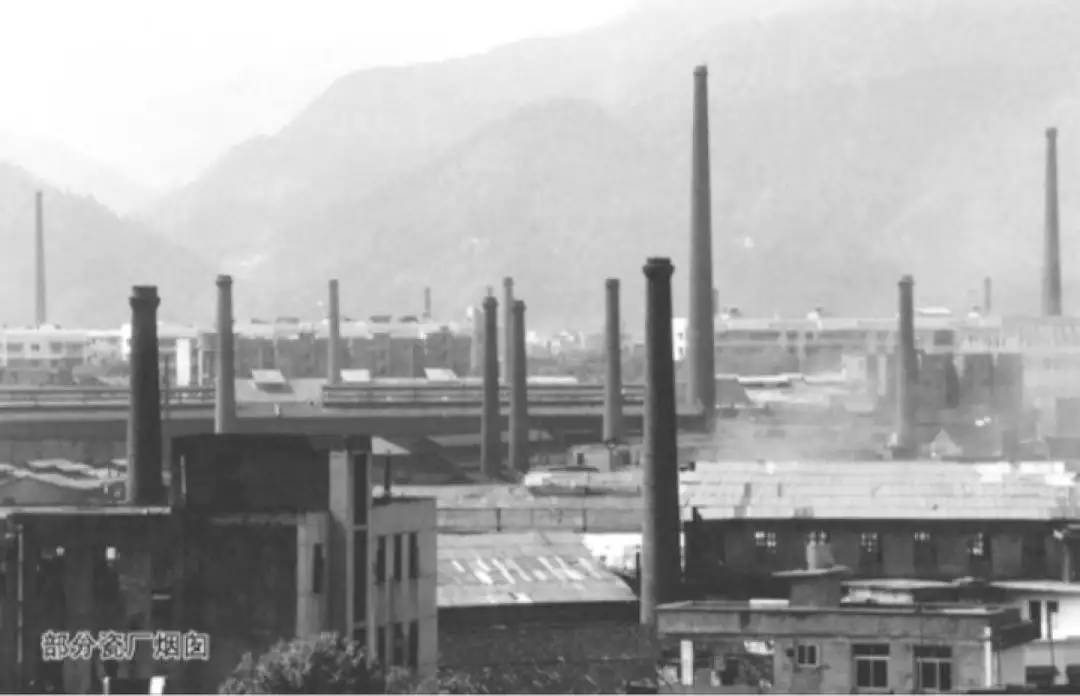
Years later, when Jiang Jingchen’s father reopened the long-sealed warehouse door with friends, everyone’s eyes lit up at the sight of the dust-covered porcelain. This was a treasure trove.
02 A Rising Star in the Ceramic World
In the ceramic collection world, “factory porcelain” refers to ceramics produced by Jingdezhen’s factories from the 1950s to the 1990s during China’s planned economy era. The “factory porcelain” of that time has now become history.
Undoubtedly, the “factory porcelain” in Jiang Jingchen’s collection is of exceptional quality.
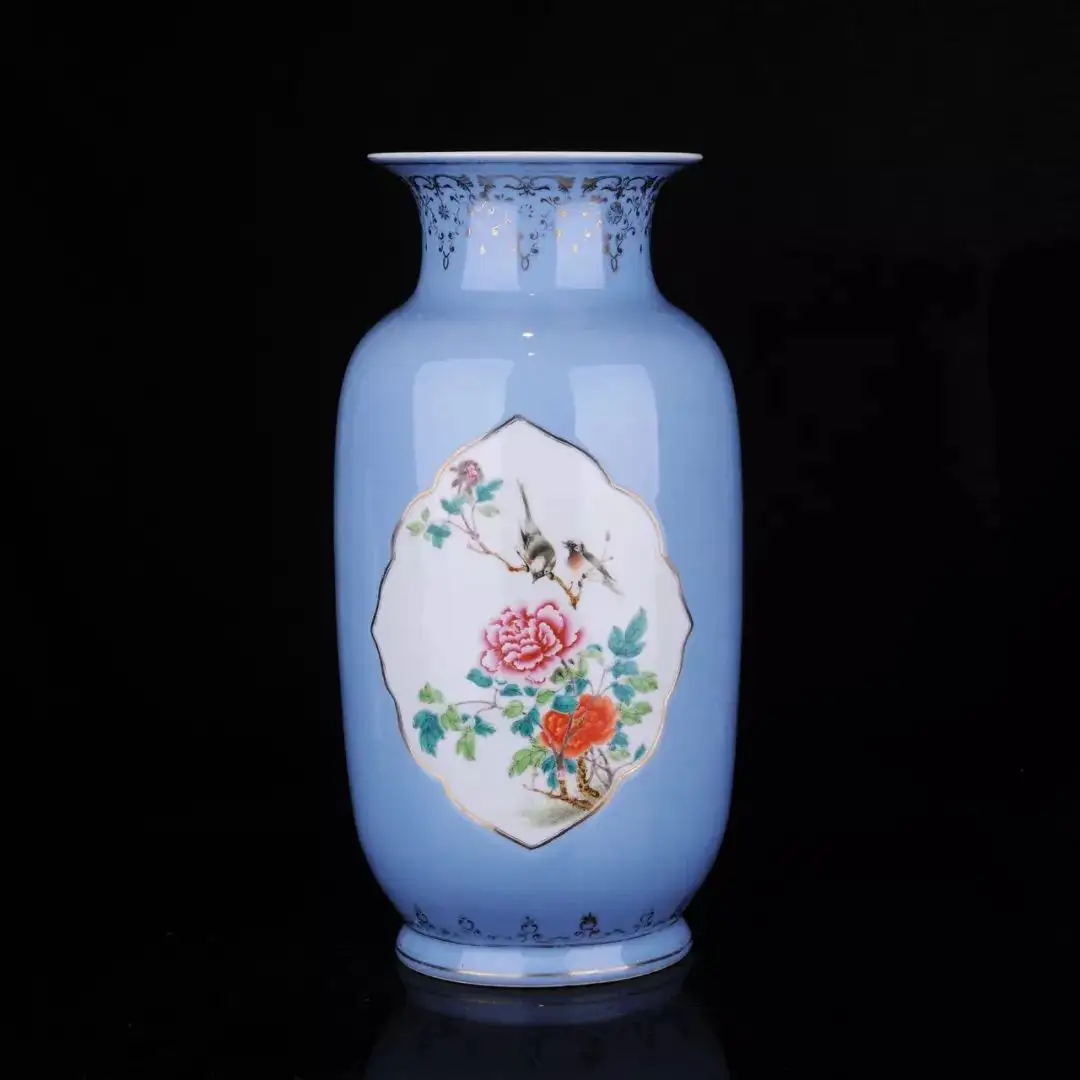
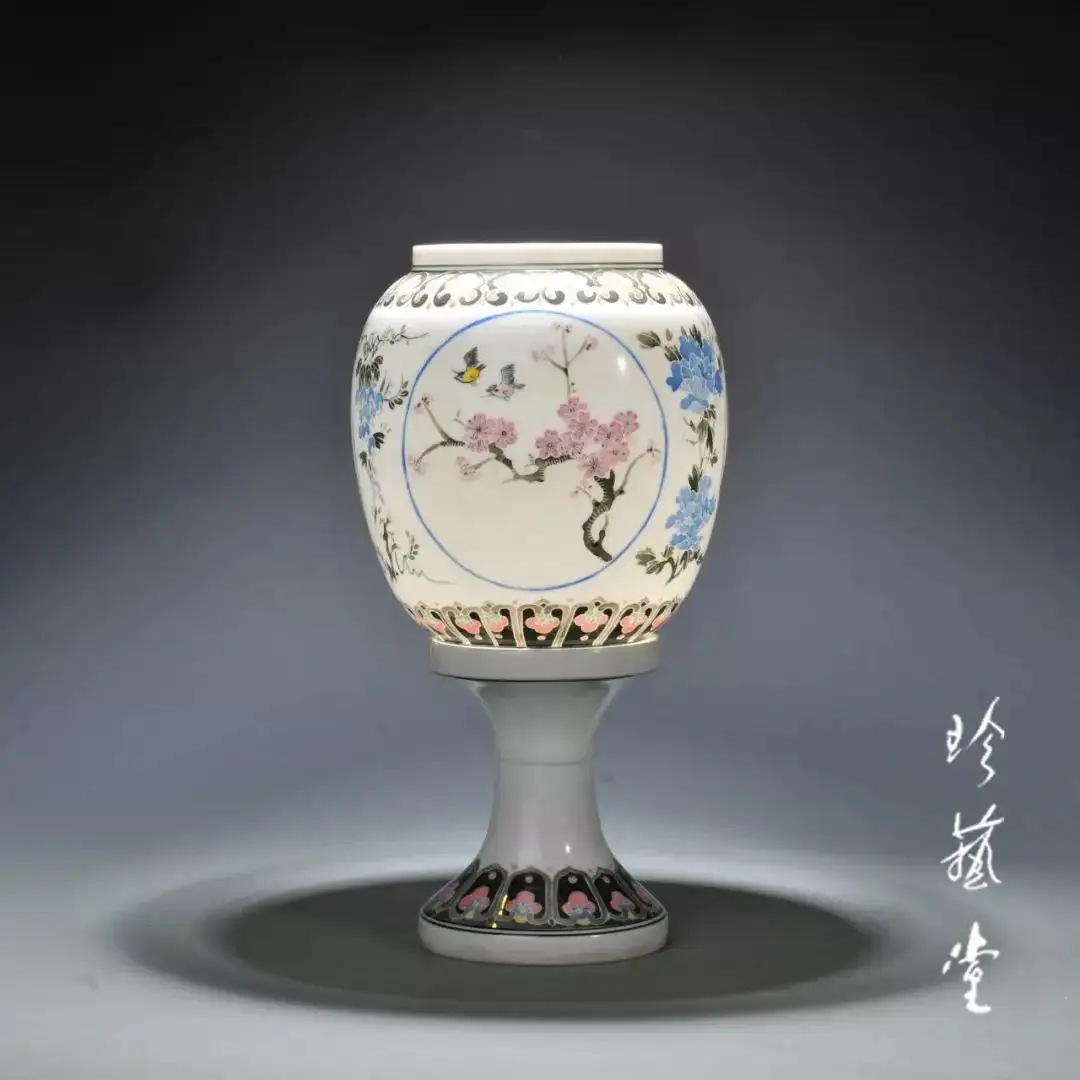
During the state-owned era, factories used natural mineral materials, giving the glazes a unique luster and color that wouldn’t fade over time. The state-owned factories and research institutes gathered many masters, some of whom later became national or provincial-level ceramic artists. These fine factory porcelain pieces were born during the peak of these artisans’ careers.
Twenty years ago, the cultural value of “factory porcelain” hadn’t yet been recognized by the public.
In Jiang Jingchen’s eyes, “factory porcelain” holds broader historical significance. As is well known, China’s official kiln system began operating in Jingdezhen during the Song and Yuan dynasties, producing porcelain with the nation’s full resources. Similarly, factory porcelain was created under state leadership, pooling national efforts and using traditional techniques—a unique phenomenon in history.
Jingdezhen fifty years ago was also different from today. The kilns used for firing ceramics transitioned from wood-fired to coal-fired, and with advancements in energy, they were later replaced by gas and electric kilns. Even the kaolin clay used for ceramics underwent physical changes over time.
In the face of relentless progress, these porcelain pieces, along with the craftsmanship and emotions embedded in them, have become a “rich mine” of irreplaceable artifacts.
03 Artworks Repeatedly Validated Hold Universal Value
After giving up her clothing business, Jiang Jingchen returned to Jingdezhen and officially took over “Zhen Yi Tang” in 2016. The porcelain her father had collected to help friends became a career she was determined to pursue.
The philosopher Schopenhauer once said, “The finest works of art, created by the most outstanding talents, should always remain mysterious and unattainable to the masses. They are separated by deep chasms, just as ordinary people can never enter the world of princes.”
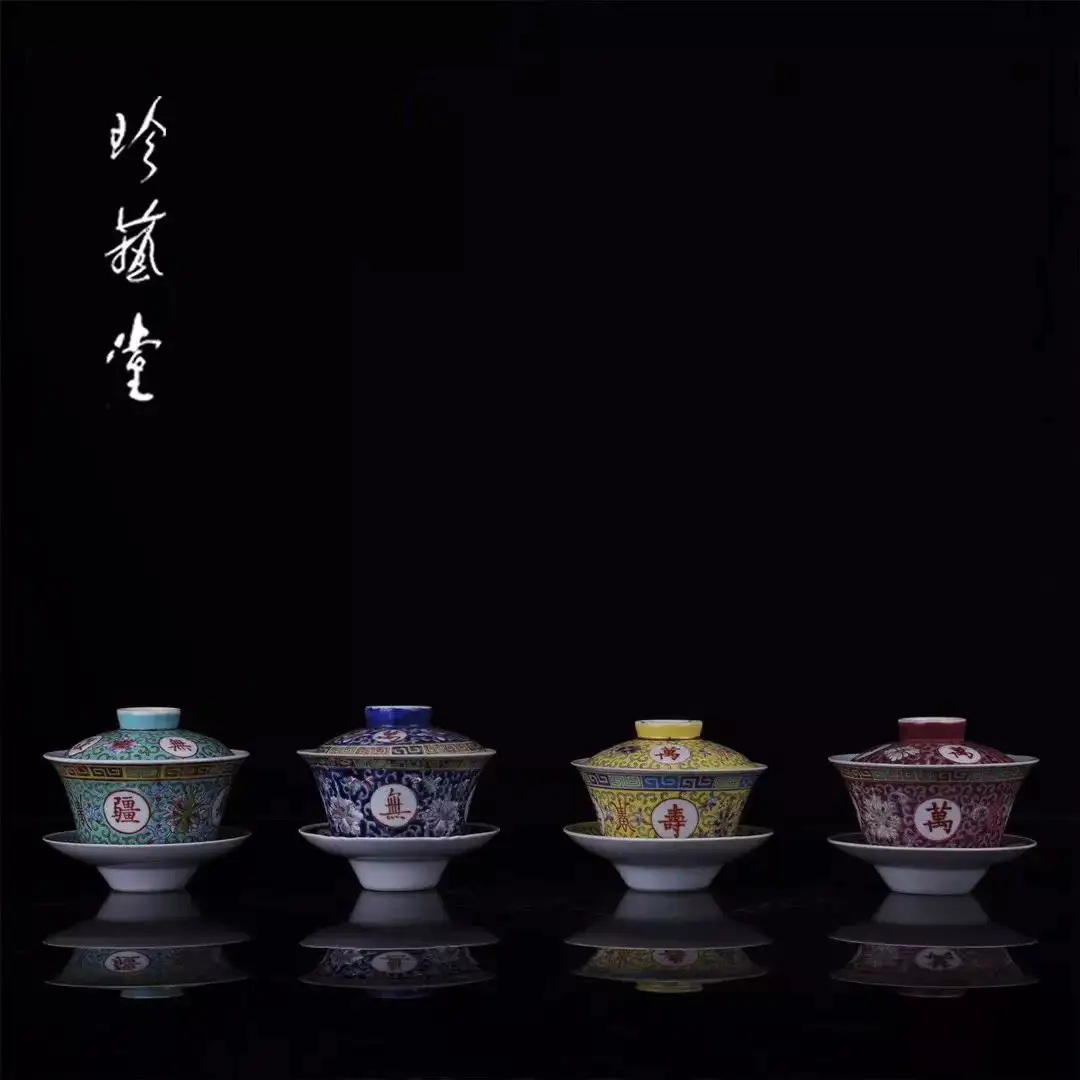
The mystery and inaccessibility Schopenhauer spoke of stem from the “chasms” in people’s understanding of art.
The solution is “circulation.” The intrinsic value of “factory porcelain” is undeniable—the original creators used their skills and experiences to create these works. But this is just the starting point. Only by bringing these pieces to the market, subjecting them to repeated validation through auctions and collections, can their value gain universal recognition.
According to Jiang Jingchen’s vision, Zhen Yi Tang is an institution dedicated to promoting factory porcelain. It will prove the irreplaceable value of these long-hidden artworks to modern society.
Working with porcelain and the people who appreciate it in Jingdezhen, Jiang Jingchen never imagined such a dramatic turn in her life.
As she put it, when she first arrived in Jingdezhen, she found the pace of life unbearably slow. When she went shopping with her family, she’d already reached the other end of the street before they’d taken a few steps. Her family joked that this wasn’t shopping at all.
Gradually, she began to understand the dynamics.
The people interested in factory porcelain varied. Some were seasoned collectors who had their own standards and didn’t need much explanation—just seeing the pieces was enough. Those looking for investment opportunities sought long-term or short-term增值收益 and needed reassurance. Building trust required ample inventory and authenticity.
But for those who bought porcelain purely out of love, she had to chat about everything. The reasons for their attachment varied, but many were drawn to the collective spirit of that era—the closeness and mutual care among people.
Having had few friends in Hong Kong, she now found companionship. “It’s actually nice to have human warmth,” she said.
04 Bridging the Chasm: We Are Custodians of an Era
Every artwork has value, but the “chasm” persists.
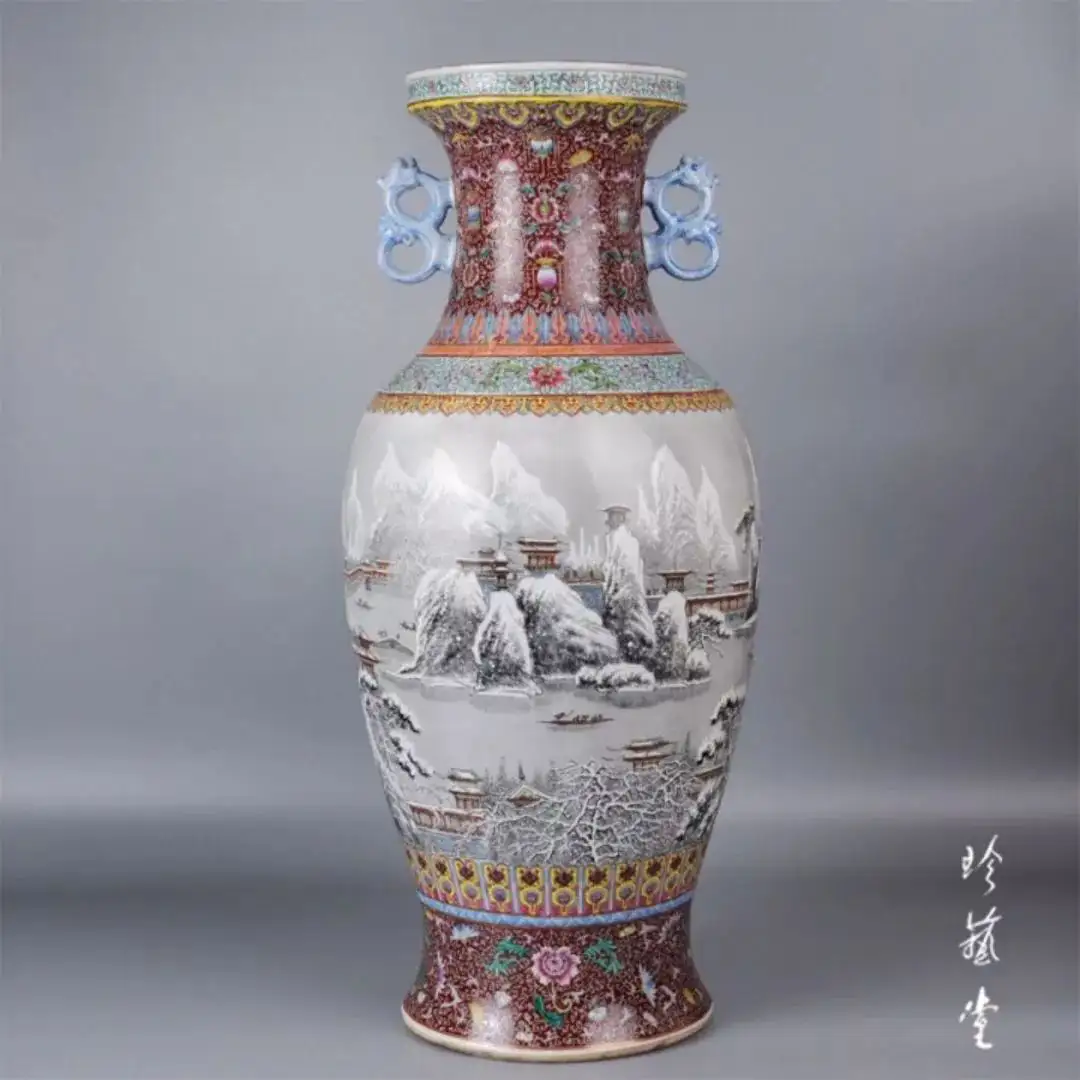
During an auction on the Dongjia App last August, Jiang Jingchen experienced a “flop.” The piece was a heavy-work famille-rose snowscape double-eared fish-tail vase produced by the Jingdezhen Art Porcelain Factory. The artist, Shen Shengsheng, once served as deputy director of the factory’s art research department. Trained by Yu Wenxiang, a disciple of He Xuren (leader of the “Eight Friends of Zhushan”), Shen mastered traditional famille-rose snowscape techniques. This vase, painted with intricate famille-rose designs, was one of his representative works.
Previously, she had only acted as a middleman, handing porcelain to collectors or auction houses for single-point dissemination. Online auctions offered a new possibility—a piece could reach multiple buyers simultaneously in a short time.
The auction result was disappointing, with the final price only a fifth of its usual value.
She felt it was a pity. This incident highlighted the ambiguity and complexity of artwork value. More importantly, incomplete or asymmetric information about art hindered market transactions. Building understanding and trust required not only time but also continuous efforts to spread awareness.
Jiang Jingchen has been collecting old photos of porcelain factories, buying any she could find on the market.
Through these images, the face of that era gradually became clearer.
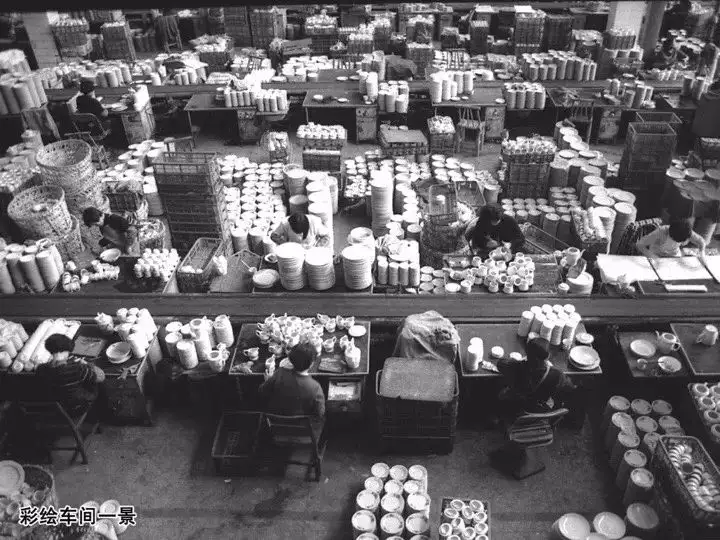

It was a golden age. Artisans who hadn’t yet achieved fame were at their creative peak. People threw themselves into the ceramic industry with unimaginable passion. Every morning, workers rode bicycles into factories scattered across the city. Researchers worked alongside laborers in workshops, kiln masters sweated over roaring fires, and elderly artisans painted intricate designs on massive porcelain vases with steady hands. Whenever people looked up, they saw the city’s skyline dotted with towering chimneys billowing smoke.
The old factory images restored the historical context of the porcelain, ensuring authenticity. On a deeper level, the value of this history would eventually be remembered.
Building museums and holding exhibitions were one approach, but the physical porcelain pieces were even more crucial. The existence of factory porcelain would connect an era, narrating a cultural lineage of aesthetic style and emotional significance. When this trend took off, Jiang Jingchen knew it would realize Zhen Yi Tang’s true purpose.
“We are custodians of an era, and also its porters. Wherever there’s a need, we’ll carry it there.”
On a summer afternoon at three o’clock, Jiang Jingchen took us on a tour of Jingdezhen’s porcelain factories. Her car passed fruit stalls, fish markets, and smokeless chimneys of long-cooled kilns. History vanishes relentlessly, but those who care will always preserve it with unwavering devotion
